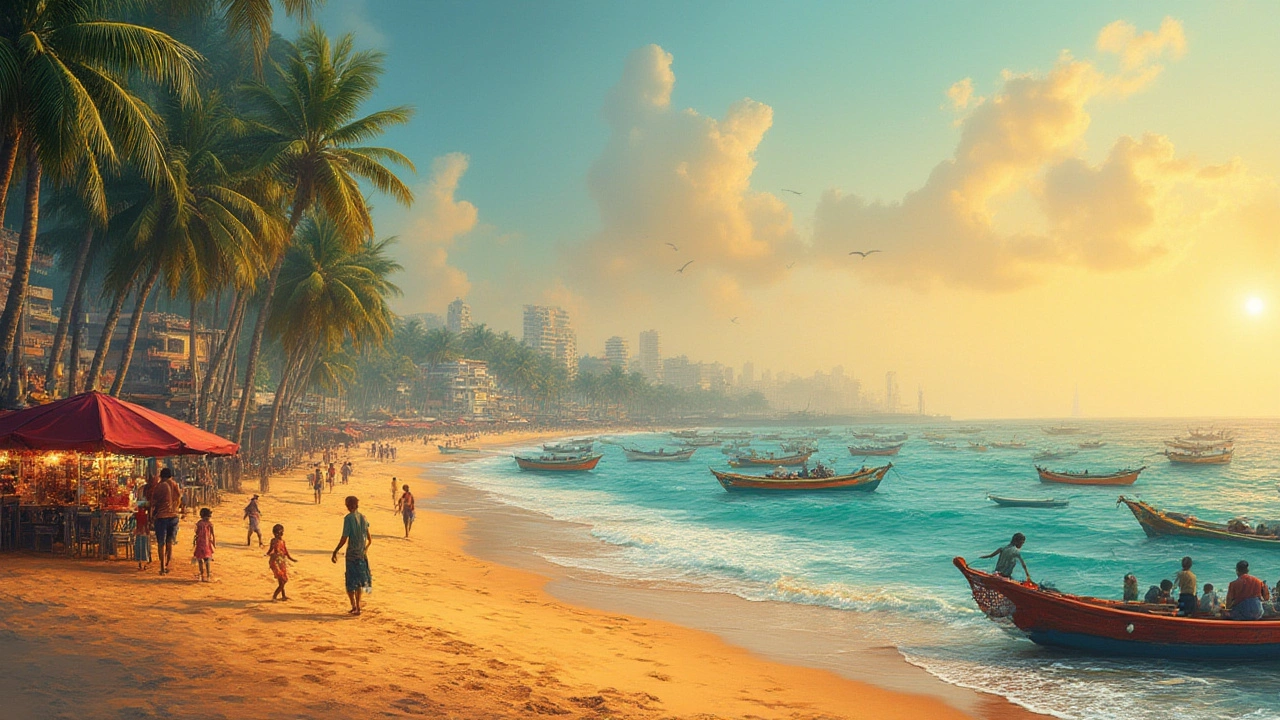
Looking for the city with the most beautiful beaches in India? Discover the top cities, hidden gems, and expert tips for exploring India's coastal paradise.
When talking about the India coast, the roughly 7,500‑km stretch of shoreline along the Arabian Sea and Bay of Bengal that defines India's maritime frontier. Also known as Indian coastline, it hosts a mix of golden sands, bustling ports, and quiet fishing villages. Adjacent to this shoreline are the Beaches of India, popular seaside spots ranging from party hubs to untouched dunes, which together shape the country's beach culture. The region also fuels Coastal tourism, travel experiences that rely on beach access, water sports, and local hospitality. Finally, the vibrant Marine wildlife, species like dolphins, sea turtles, and coral reefs that influence both ecology and visitor safety. All these pieces intertwine, making the India coast a dynamic destination worth exploring.
The Beaches of India are not a monolith; each state contributes its own flavor. Goa’s party‑ready stretch, Kerala’s back‑water‑linked beaches, and the pristine sands of Odisha each offer distinct experiences. In Tamil Nadu, Mahabalipuram blends ancient stone carvings with surf‑friendly waves, while Gujarat’s Kutch region showcases desert‑to‑sea transitions. These locations illustrate how geography determines vibe, accessibility, and the type of activities you can enjoy, whether you’re after sunrise yoga, night‑time beach parties, or quiet tide‑pooling.
Coastal tourism thrives on reliable transport and infrastructure. Major ports like Mumbai, Chennai, and Visakhapatnam double as travel gateways, linking air, rail, and road networks to seaside towns. Seasonal ferry services connect isolated islands, and budget buses now run directly to popular beach hubs. When the infrastructure aligns, tourist flow increases, which in turn encourages local economies to invest in better amenities, clean‑up drives, and cultural showcases.
Understanding marine wildlife is key to both enjoyment and safety. Dolphin sightings off the coast of Kerala often become unforgettable moments, while protected sea‑turtle nesting sites in Odisha demand respectful distance. Coral reefs near Lakshadweep attract snorkelers but also require responsible behavior to prevent damage. Awareness of these ecosystems helps travelers choose eco‑friendly tours and avoid actions that could harm fragile habitats.
Climate plays a decisive role in planning a trip along the India coast. The monsoon season, typically from June to September, brings heavy rains and rough seas that can limit beach activities but also unveil lush green backdrops and dramatic sunsets. Conversely, the winter months (October to March) offer mild temperatures and calm waters, ideal for swimming, sunbathing, and water sports. Knowing the seasonal patterns lets you match your itinerary to your preferred weather and activity level.
Safety measures extend beyond wildlife awareness. Strong currents, especially during high tide, are common on the western coast, so checking local advisories before entering the water is wise. Many popular beaches provide lifeguard services, marked swimming zones, and rental equipment that meets safety standards. Carrying basic first‑aid supplies and staying hydrated are simple habits that can prevent most minor mishaps.
Cultural experiences add depth to any coastal visit. Coastal festivals like Goa’s Sunburn music event, Kerala’s Onam boat races, and Gujarat’s Navratri celebrations mingle with local cuisine—think fresh seafood curries, coconut‑based snacks, and regional specialties such as Goan vindaloo or Malvani fish fry. Engaging with these traditions turns a beach day into a richer, more memorable journey.
Below you’ll find a hand‑picked collection of articles that dive deeper into each of these aspects—whether you’re hunting the best surf spots, seeking safe travel tips, or wanting to learn about marine conservation efforts along the India coast. Browse through to equip yourself with the knowledge you need for an unforgettable coastal adventure.

Looking for the city with the most beautiful beaches in India? Discover the top cities, hidden gems, and expert tips for exploring India's coastal paradise.